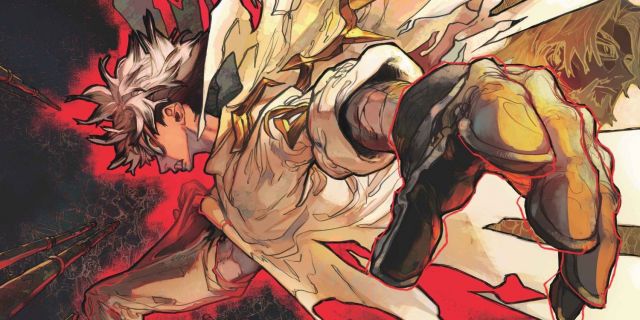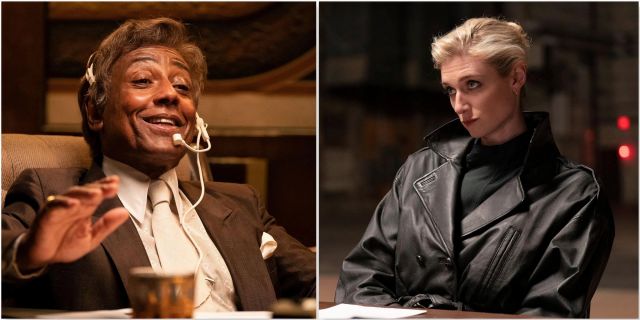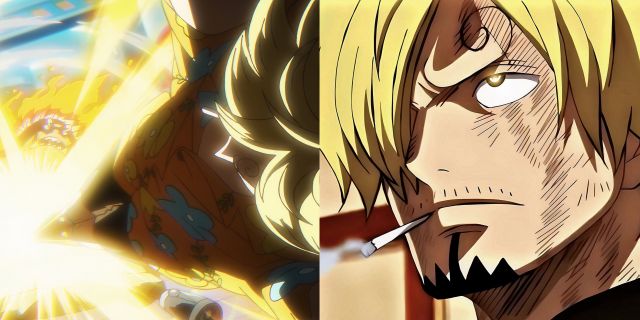Highlights
- Gachiakuta asks deep questions about the soul within discarded objects, creating a unique and thought-provoking narrative.
- The visually-striking art direction and character designs make Gachiakuta a must-read for fans of action and battle shonen.
- This dark fantasy manga pushes boundaries with themes of humanity, prejudice, and class inequality, promising an amazing journey.
Every once in a while, a new manga emerges that makes an immense impression on readers from the word “go”. Titles like Takeru Hokazono’s Kagurabachi; Tatsuya Fujimoto’s CHAINSAW MAN and Gege Akutami’s JUJUTSU KAISEN are some titles that have emerged in the past five or so years that have fundamentally shifted the direction of shōnen manga to some extent, with two of the aforementioned being part of Shōnen Jump’s “Dark Trio”; a moniker used to refer to shōnen manga released during the magazine’s digital era which featured comparatively darker thematic content than the majority of their predecessors.
Jump is by no means the only notable publisher of manga pushing the envelope with grittier material specifically marketed as shōnen (or even influential manga in general), and Kodansha’s Gachiakuta, written and illustrated by Kei Urana, may very well be another smash hit. In a story centered on the soul within objects, the series dares to ask: what happens to the soul within that which is thrown away?
|
GACHIAKUTA |
|
|
Author |
Kei Urana (Art, Story); Hideyoshi Ando (Graffiti Design) |
|
Genre |
Action; Dark Fantasy |
|
Demographic |
Shōnen |
|
Serialization Date |
February 16, 2022 – present |
|
Volumes (JP | EN) |
10+ | 4+ (ongoing) |
Plot
The Rotten Descent

Gachiakuta is a dark fantasy series set in a world where a population descended from exiled criminals referred to as “tribesfolk” reside in the slums and trenches of a wealthy society. These wealthy elites throw anything they deem unwanted into a dump site at the edge of town known as “The Pit” A young boy named Rudo lives with the tribesfolk, and his adoptive dad, Regto, tells him that his biological father was one such criminal exiled by the upper class shortly before Rudo’s birth. Despising the wastefulness of the privileged, Rudo often rummaged through trash, usually finding something he thought was worth salvaging (despite the fact that this act was considered illegal).
One day after one of his secret rummaging trips, Rudo finds Regto dying from a stab wound inflicted by an unknown assailant. Unconcerned with his own impending death, Regto tells the young boy to run; however, due to the prejudice he experiences as the son of a known criminal, Rudo is apprehended and charged with the murder of the only father he ever knew.
Cast into the pit, Rudo awakens to a hellish landscape of trash and decay as far as the eye can see, where he is attacked by beasts comprised of trash but manages to fend them off until he is rescued by a young man named Engine. Rudo then learns that he isn’t underground, but actually fell to the surface from The Sphere, and that he has a certain ability to connect to the soul within a precious object; making him what they call a “Giver”.
Engine is part of an organization known as the Cleaners, which consists of Givers and regular people who hunt down trash beasts with the use of their own personal “Vital Instruments”. Rudo reluctantly agrees to join their ranks, but only as a means to get the information he needs to return to the Sphere, find Regto’s killer and make everyone pay.
The Concept Is Unique and Exciting
One Person’s Trash Is Another’s Treasure

In Gachiakuta, Rudo grows up hearing about the belief that if someone had an object that they cared for and connected with in a significant way, it would give rise to a soul forming within that object. While dismissed as myth, this central tenet of the story’s overall development does multiple things: first, connecting Rudo’s adoptive father Regto to a culture that was by no means a prominent one in the slum where they lived, and second, establishing how Givers come to exist in the first place.
It is a rare event; however, it can supposedly be induced, meaning that someone can deliberately decide to forge some kind of connection to a designated “precious object” to create what they call “Jinki” or Vital Instruments, which are objects that have a “thought” dwelling within them. A twist is immediately introduced when the narrative questions what becomes of the soul residing in “trash”, presenting us with Rudo, a character unique in his appreciation for objects long-abandoned. His attachment to the gloves granted to him by Regto and this uniqueness become the foundation of Rudo as a Giver capable of turning anything he uses into a Jinki.
It’s a profound concept that also takes every opportunity to come up with imaginative explorations of a “trashtopia”. As described by Kodansha, Gachiakuta is a dark fantasy that recalls classics like Yukito Kishiro’s Battle Angel Alita with dystopian themes and people living on a desolate and unforgiving surface while the privileged reside on some kind of structure that is out of the reach of the apparent depravity and savagery below.
There are various moments in the early parts of Gachiakuta that are evidence that it isn’t the kind of straight-forward shonen romp one would expect to emerge from the meeting of themes like the aforementioned, humanity and the revocation thereof, inequality and prejudice. There’s a little bit more, like with the questioning of the soul within trash, and the multiple examples of class inequality within the Gachiakuta universe that are the signs of something that is going to be an amazing journey.
Visually Striking Art Direction and Character Designs
A Manga That Is Great To Look At

Gachiakuta boasts very strong and visually-striking art. Rudo’s design as a protagonist leans into the stereotype of the creativity that can come out of a main character design; however, there’s a grittiness granted to the character designs that is partly due to some of the thick, flowing lines that make up a lot of the art, which combined with brilliant composition for backgrounds, panels and action poses, makes for a very visually appealing manga, especially to a fan of action or battle shonen.
Some might even compare Rudy’s design to that of Shinra Kusakabe, the main character of Atsushi Okubo’s Fire Force, more specifically the niche of character design that gives the “good guy” an evil-looking face. Upon further inspection, this similarity may arise from the fact that Gachiakuta author Kei Urana is not just a fan of Soul Eater, but she even worked as an assistant for Okubo on Fire Force, with him even calling her his successor. Perspective shots are an absolute joy to see in Gachiakuta, and the series offers a very dynamic feel when it comes to combat, making its artistic quality one of the biggest reasons to give it a read.
The first chapter of Kei Urana’s Gachiakuta is available to read for free on Kodansha’s website.











Leave a Reply